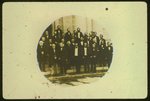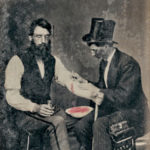Both physicians and the public became increasingly interested in the treatment of insanity as the 19th century progressed. Several people became prominent for their work and contributions to the field, and I will profile a few of them in coming blogs.
Dr. Sylvester D. Willard, born in 1825, was the son of a physician and followed in his father’s footsteps. He began an apprenticeship with his father, and graduated from Albany Medical College in 1848, after attending three semesters of lectures there.
In 1864, the secretary of the state medical society in New York was tasked with looking into the condition of the insane in state poorhouses and asylums. The secretary asked Dr. Willard to make that investigation, which he did with conscientious detail. His report on the misery within these places caught the public’s attention. Willard’s report also impressed the state’s legislature, and it passed a bill to found an asylum for the insane poor.
Dr. Willard became ill with a fever and died April 2, 1865. The asylum, which was going to be named “The Beck Asylum for the Insane” after Dr. T. Romeyn Beck (a prominent physician who studied insanity), was named “The Willard Asylum for the Insane,” instead.
________________________________________________________






Hi,
I’m sorry I didn’t answer immediately–I only check for comments every week or so. I don’t know at this point what my sources were for this post since it’s an older one, but there are a lot of websites that will lead you to them. Below are some interesting places to get your started:
http://socialwelfare.library.vcu.edu/issues/willard-asylum-insane-stewards-report-1900/
https://inmatesofwillard.com/
https://www.amazon.com/Lives-They-Left-Behind-Suitcases
The steward’s report would be a primary source, but obviously it’s only for one year. You may be able to find more by simply searching on the web. A great deal has been written about Willard, and the second two suggestions will probably give you some interesting detail. I don’t know what grade or level you’re writing your paper for, but just as a suggestion, read from a couple of these latter two and just look at their footnotes or bibliographies to see where the authors got their primary material. That’s often the easiest way to get right to the source. You may also contact an archives in the area or the New York (state) archives to see if they have any further information.
I hope this helps.
Carla
Hey! I’m trying to find more on Willard! Can you leave your primary sources? It’s for a paper I am writing on the Kingston City Alms House in Ulster County.
Best,
Sam